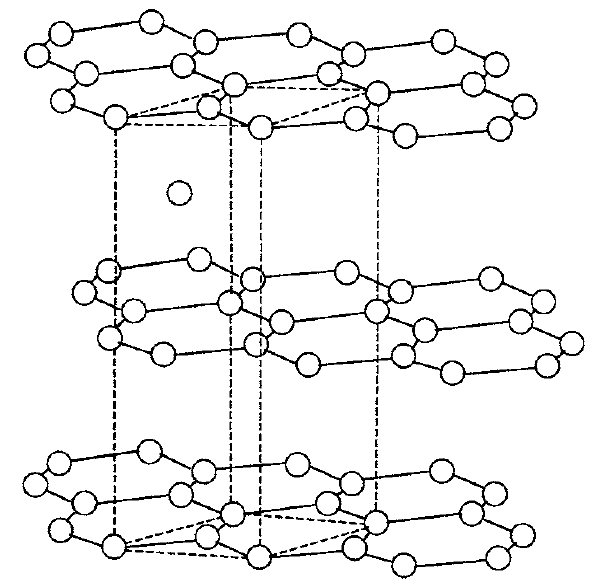
Graphite
 المؤلف:
Franklin Potter and Christopher Jargodzki
المؤلف:
Franklin Potter and Christopher Jargodzki
 المصدر:
Mad about Modern Physics
المصدر:
Mad about Modern Physics
 الجزء والصفحة:
p 70
الجزء والصفحة:
p 70
 20-10-2016
20-10-2016
 645
645
Graphite
Atoms in a crystal make a regular array if there are no dislocations. Most pure single-element crystals have a cubic or a diamond crystal structure, with all orthogonal directions showing the same structural spacing. Even for a pure element substance, however, the spacing may be different in different directions. For example, take carbon atoms, which probably are components of more than 75 percent of all known compounds. In diamond they have the same structure in all orthogonal directions, but in graphite the third direction is definitely quite different than the other two directions, which define a plane of hexagonal carbon rings. How can this third direction be so different in an originally nonbiased environment?

Answer
Place identical atoms into a diamond crystal structure. First, one would mathematically find a wave function for the four bonding electrons using the Schrodinger equation, resulting in what are called sp3 orbitals. Then one would represent the periodic symmetry in the crystal. Each carbon atom will make four orthogonal bonds with tetrahedral symmetry if it can to its nearest neighbors. This diamond structure is one way to do this bonding.
Another way to have four carbon bonds is for six carbon atoms to form a regular hexagonal ring with two bonds in the ring for each carbon, and the other two bonds extending perpendicular to the ring, one upward and the other downward. Upon calculating the energy states for the four carbon binding states, one learns that the two perpendicular binding states are held less securely than the ones in the ring that form a plane. The structure makes graphite, a layered crystal that slips easily between the planes. Pencil writing surfaces have been made from graphite for several thousand years.
Carbon in the fullerene structure is even more interesting. The structure of 60 carbon atoms that results depends on many factors, including the velocity distribution of the free carbon atoms before collision, the formation of intermediate structures, and so on. Fullerenes tend to form by “rolling up” a graphite sheet and adding carbon pentagons to achieve curvature. If you just roll the sheet into a cylinder and cap off the ends with pentagon-curved hemispheres, you make a carbon nanotube. These nanotubes are quite different from the traditional fullerene-type materials (i.e., roundish cages), so they have quite different properties.
 الاكثر قراءة في طرائف الفيزياء
الاكثر قراءة في طرائف الفيزياء
 اخر الاخبار
اخر الاخبار
اخبار العتبة العباسية المقدسة


